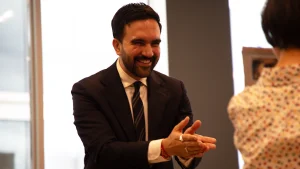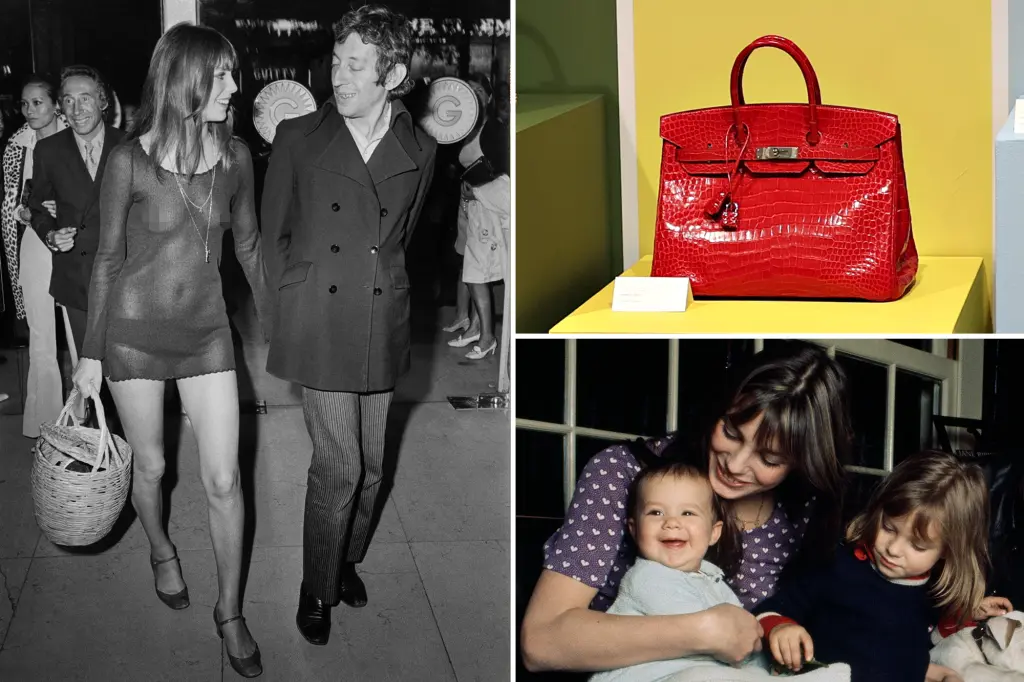Jane Birkin: The Bohemian Icon Behind the Ultimate Status Symbol
Jane Birkin, the namesake of the world-famous Hermès Birkin bag, lived a life that stood in stark contrast to the polished luxury her handbag represents. As detailed in Marisa Meltzer’s new biography, “It Girl: The Life and Legacy of Jane Birkin,” the woman behind the ultimate status symbol was a true bohemian spirit whose unconventional life challenged societal norms while capturing the imagination of generations. Far from the pristine image associated with the bag that bears her name, Birkin was a free spirit who faced Vatican condemnation for her provocative music, had three children with three different partners, and maintained her vivacious nightlife even as a young mother, often with a baby in tow. “The term ‘It Girl’ is a shorthand for her unique brand of fame,” Meltzer explains, “but it’s just the beginning of who Jane Birkin really was.”
Born into an artistic London family, Birkin’s path to iconhood began with teenage rebellion. After being teased at boarding school for her slender frame and attempting to run away, her parents sent her to Paris at 16—a transformative experience that saw her return with a fresh style and enthusiasm for London’s burgeoning 1960s youth culture. Her entry into performance was serendipitous: at 17, she stumbled into the wrong theater audition and landed her first acting role. By 18, she was both featured in the musical “Passion Flower Hotel” and married to its 30-year-old songwriter John Barry, despite family disapproval. True to her emerging style, she wore a white crochet mini dress to the ceremony. The marriage proved unhappy—Barry was coldly indifferent, leaving Birkin desperately trying to maintain his interest, even sleeping with eyeliner under her pillow for instant touch-ups. By 21, she was divorced with an infant daughter, Kate Barry, and struggling financially. Seeking a fresh start, she returned to Paris for an acting opportunity that would change her life.
In Paris, Birkin met Serge Gainsbourg—the provocative 40-year-old musician and actor who had recently ended his relationship with Brigitte Bardot—on the set of “Slogan.” Their initial friction gave way to undeniable chemistry, and after the film’s director arranged a dinner at the famous restaurant Maxime to reconcile their differences, the pair spent a transformative night together. Birkin later reflected that she came to understand Gainsbourg’s apparent aggression as “defense mechanisms of someone infinitely too sensitive, terribly romantic.” When filming ended in August 1968, she decided to remain in Paris with Gainsbourg, beginning a passionate 13-year relationship that would captivate the public imagination. In 1969, they released their scandalous duet “Je t’aime… moi non plus,” featuring Birkin’s provocative moans and declarations of love. The song reached number one in France and England despite—or perhaps because of—being banned by the BBC and condemned by the Vatican. Their notoriety grew as they appeared everywhere in their signature styles: Birkin in mini skirts carrying her wicker basket, Gainsbourg with shirts unbuttoned to his navel, often with Birkin’s young daughter in tow.
The couple’s bohemian lifestyle became legendary as they welcomed their daughter Charlotte Gainsbourg in 1971. Birkin had posed topless for Gainsbourg’s album “Historie of Melody Nelson” while pregnant, setting the tone for their unconventional family life. They frequently took their children to nightclubs, with baby Charlotte sleeping in Birkin’s iconic wicker basket. On nights when they went out alone, they would return just in time to wake their children for school before sleeping until afternoon. Despite her devotion to Gainsbourg, his alcoholism, jealousy, and possessiveness—including carrying a gun on her film sets and threats against potential suitors—eventually strained the relationship. She ultimately left him for film director Jacques Doillon, who offered her a substantial film role in “The Prodigal Daughter” (1981) and fathered her third child, Lou Doillon. This relationship lasted about a decade until Doillon’s infidelity ended it.
The creation of the iconic Birkin bag came from a chance encounter in 1983, when Birkin found herself seated next to Hermès CEO Jean-Louis Dumas on a flight from Paris to London. For years, Birkin had carried her belongings in her signature wicker basket, establishing herself as a fashion maverick in France. When items kept spilling from her basket during the flight, Dumas asked why she didn’t use a bag with pockets. Upon hearing she couldn’t find one she liked, he invited her to describe her ideal bag. Birkin sketched a trapezoidal purse with two handles on an airsickness bag, and Dumas promised to make it for her. A year later, the Birkin Bag was born, and Birkin herself began carrying it everywhere—though in characteristically bohemian fashion, she adorned it with stickers, hung keychains and beaded accessories from its handles, and stuffed it beyond capacity. She used her original bag until 1994, when she donated the scuffed, well-worn accessory to an AIDS charity auction. That same bag would later sell for an astonishing $10.1 million in July 2023, months after Birkin’s death at age 76.
As she approached her 40s in 1988, Birkin sought to transcend her ingenue image while embarking on her first solo concert tour. Still close with Gainsbourg and performing his music, she rejected his inquiries about what dress she would wear by spontaneously cutting her hair into a pixie style with his nail scissors and opting to perform in men’s trousers, a white tank top, and an oversized button-down—creating another iconic look. Her later years were marked by health challenges and profound losses, including the apparent suicide of her eldest daughter Kate in 2013. Yet as Meltzer asserts in her biography, Birkin’s legacy far transcends the famous handbag bearing her name. She was “a tastemaker who changed the world around her, altered the cultural fabric of the times with her artistry and individuality.” The contrast between the meticulously crafted, wildly expensive status symbol that is the Birkin bag and the free-spirited, boundary-pushing woman who inspired it reflects the fascinating contradictions that made Jane Birkin not just an “It Girl,” but a cultural icon whose influence continues to resonate across fashion, music, and film.















